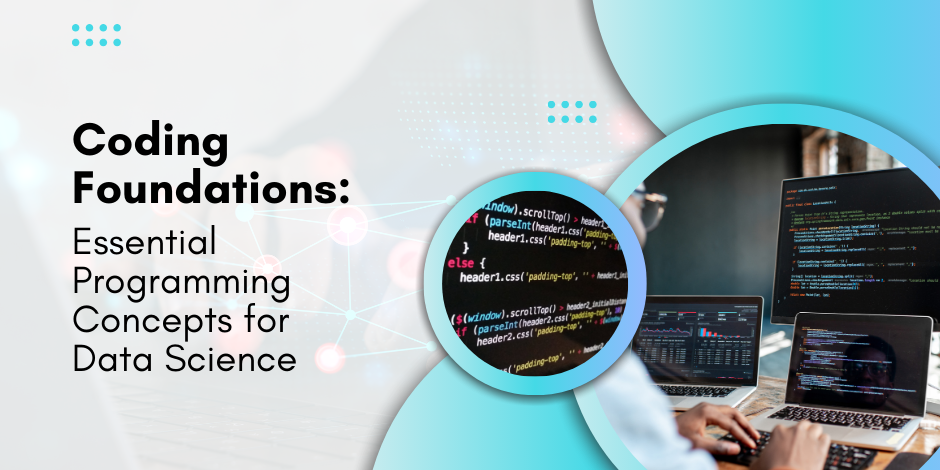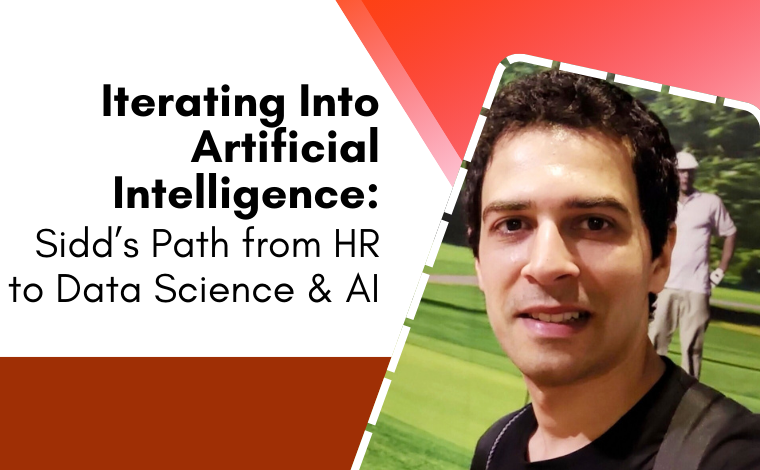Coding Foundations: Essential Programming Concepts for Data Science

Stay Informed With Our Weekly Newsletter
Receive crucial updates on the ever-evolving landscape of technology and innovation.
In this rapidly evolving field, a strong foundation in programming concepts for data science is essential for success.
Writing code enables data scientists to analyse and manipulate data effectively, build models, and derive valuable insights.
Understanding the programming concepts for data science and their intersection with coding is the first step towards becoming a proficient data scientist.
Understanding the intersection of coding and data science

Data science and coding go hand in hand, as coding provides the tools necessary for data scientists to work their magic on complex datasets.
Data scientists can transform raw data into meaningful information, uncover patterns and trends, and create predictive models through coding.
The ability to code allows data scientists to automate repetitive tasks, analyse data, and develop sophisticated algorithms.
The importance of programming in data science
Understanding programming concepts for data science is a critical skill data scientists must possess to excel in their field.
It allows them to manipulate and analyse data effectively, build models, and communicate their findings.
Programming also allows them to automate repetitive tasks, optimise code for performance, and work with large datasets.
Essential programming languages for data science
The most prominent programming languages are critical to understanding programming concepts for data science.
Several programming languages are widely used and offer powerful capabilities for working with data.
Some of the key programming languages for data science include:
- Python: Python is a versatile language widely used in data science due to its simplicity and readability. It offers libraries and tools specifically designed for machine learning and data analysis, such as NumPy, Pandas, and scikit-learn.
- R: R is a language specifically designed for statistical computing and data visualisation. It provides a rich ecosystem of libraries and packages for data analysis and visualisation, making it a popular choice among data scientists.
- Structured Query Language (SQL): SQL is used for manipulating and managing relational databases. It is commonly used in data science for querying and analysing database data.
Diving into the basics of coding
It is important to start with the basics to understand and effectively apply programming concepts for data science.
Understanding algorithms and data structures
An algorithm is a step-by-step procedure for solving a problem or achieving a specific goal. In data science, algorithms process and analyse data and are the building blocks of machine learning models.
Understanding algorithms is key to implementing efficient and effective data analyses.
On the other hand, data structures refer to how data is organised and stored in a computer’s memory.
Different data structures are suited for different types of data and operations.
The role of syntax in programming
Syntax refers to the rules and conventions that dictate how code is structured and written in a programming language.
Syntax is crucial in programming, as it determines whether code is valid and can be executed by a computer.
Understanding syntax is essential for writing clean and error-free code.
Each programming language has its own syntax rules, which include rules for defining variables, writing conditional statements, and creating functions.
By mastering the syntax of a programming language, data scientists can write code that is efficient, readable, and easy to maintain.
Exploring essential programming concepts

Now that we have covered the basics of coding, let’s delve deeper into some essential programming concepts for data science to work effectively with data.
Variables and data types in programming
Another example of essential programming concepts for data science includes variables. Variables are used to store and manipulate data.
A variable is a named space in a computer’s memory that can hold a specific value.
On the other hand, data types define the kind of data that can be stored in a variable.
Common data types include integers, floating-point numbers, booleans, strings, and arrays.
Control structures: loops and conditional statements
Control structures allow data scientists to control the execution flow in their code.
Loops, such as for loops and while loops, enable data scientists to repeat a block of code multiple times, making it easier to perform repetitive tasks.
Conditional statements, such as if statements and switch statements, allow data scientists to execute specific blocks of code based on certain conditions.
Advanced programming concepts for data science
Functions and modules in data science programming
Essential programming concepts for data science include functions and modules.
Functions are reusable blocks of code that perform a specific task. Functions allow data scientists to encapsulate complex operations into modular and reusable code.
Functions can take input arguments, perform calculations, and return output values.
Data scientists can more efficiently organise and manage their code by using functions.
Modules, on the other hand, are collections of related functions and variables that are grouped into a single file.
Modules allow data scientists to organise and structure their code into logical units, making it easier to manage and maintain.
Modules can be imported into other scripts, allowing data scientists to use functions and variables defined in the module.
Object-oriented programming (OOP) and data science
Another example of the essential programming concepts for data science that budding data scientists must understand is OOP.
OOP is a programming paradigm that uses objects as the building blocks of programs.
In OOP, objects are instances of classes that define their structure and behaviour.
Data scientists can use OOP to create custom classes and objects that represent the entities and concepts they are working with.
OOP provides data scientists a powerful way to organise and structure their code.
By creating classes, data scientists can combine data and methods, reducing complexity and increasing reusability.
OOP also enables data scientists to model real-world entities and relationships, making their code more intuitive and maintainable.
The role of libraries and frameworks in data science

Libraries and frameworks are essential tools for data scientists.
They provide pre-built code and functionality that can be used to solve common problems and speed up development.
Introduction to libraries and frameworks
Libraries and frameworks are collections of pre-written code that provide specific functionality and tools.
They save data scientists time and effort by providing ready-made solutions to common problems, allowing them to focus on higher-level tasks.
Libraries typically consist of functions and classes that can be imported and used in a data scientist’s code.
On the other hand, frameworks are more comprehensive than libraries and provide a complete structure for building applications.
Frameworks often include libraries and additional tools and conventions for developing software applications.
Popular libraries for data science
Numerous libraries are available for data scientists, offering a wide range of functionality for tasks such as data cleaning, analysis, visualisation, and machine learning.
Some popular libraries include:
- NumPy: a library for numerical computing in Python.
- Pandas: a data manipulation and analysis library for Python.
- Matplotlib: a plotting library for Python.
- scikit-learn: a machine learning library for Python.
These libraries, among many others, provide data scientists with the tools to efficiently analyse, work with data, and build predictive models.
Conclusion
A strong foundation in programming concepts for data science is essential.
Understanding the intersection of coding and data science, as well as the key programming languages and concepts, will set aspiring data scientists on the path to success.
Mastering coding allows data scientists to analyse and manipulate data, build models, and derive valuable insights.
Libraries and frameworks enhance their capabilities, providing pre-built code and functionality that accelerate development.
With a solid foundation in programming concepts for data science, data scientists can unlock data’s full potential and boost innovation in their field.
You will be well-equipped to tackle data science challenges by solidly understanding these areas.
Are you ready to boost your data science career?
The Institute of Data’s Data Science & AI program offers a real-world, practical curriculum taught by industry-experienced professionals.
We’ll support your learning with extensive resources and flexible learning options to suit your busy schedule.
Ready to learn more about our programs? Contact our local team for a free career consultation.





